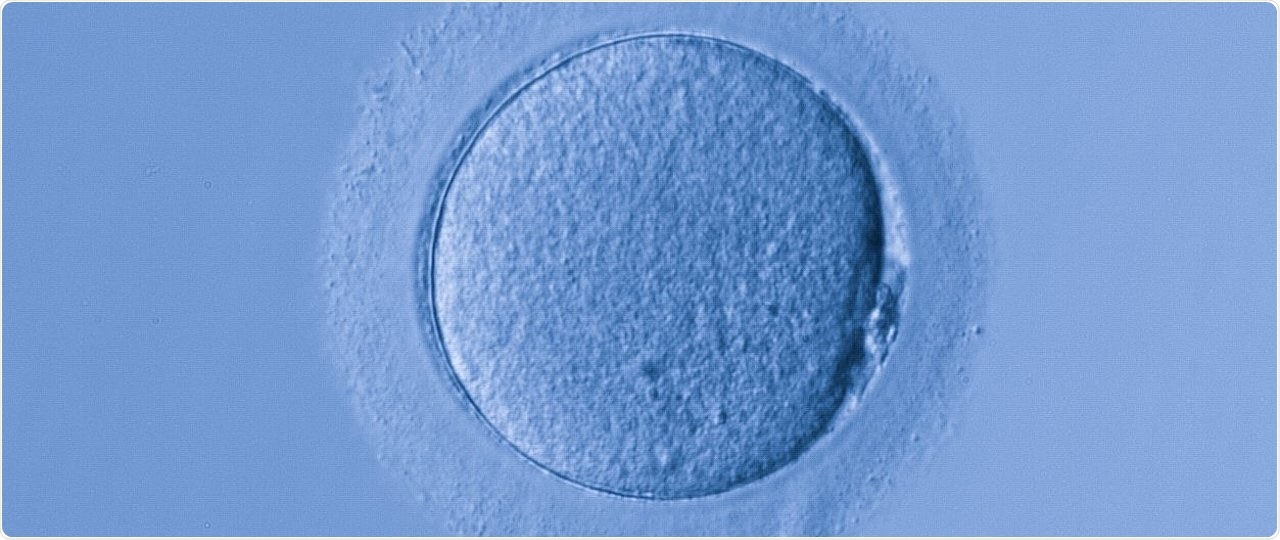Hereditary diseases, along with cancers and cardiovascular diseases, may be linked to genomic imprinting—a phenomenon in which only the maternally or paternally inherited genotype is engaged.
Researchers, from the Technical University of Munich (TUM), the Max Planck Institute for Molecular Genetics (MPIMG) in Berlin, and Harvard University in Cambridge in the USA, have now studied the underlying mechanisms of gene deactivation.

After fertilization of the egg, epigenetic processes are crucial for the development of the embryo. Image Credit: iStockphoto.com/Red_Hayabusa
Cells of humans contain the entire genetic information from both the parents. Each of them provides 23 chromosomes that make the human DNA. As a result, each gene has two copies in the genome, and both are usually active. This has the benefit of usually canceling out damaged mutations inherited from the mother or father by the other copy of the gene.
However, for about 1% of the genes, only the gene inherited from the father or mother is active, while the other is disabled through a phenomenon known as genomic imprinting.
Approach for treating diseases
Many genetic and epigenetic diseases are associated with genomic imprinting, such as Beckwith-Wiedemann syndrome, Angelman syndrome and Prader-Willi syndrome. If the healthy, deactivated gene could be reactivated, it would be theoretically possible to compensate for complications caused by the active, defective gene.”
Dr Daniel Andergassen, Head, Independent Junior Research Group, Institute of Pharmacology and Toxicology, Technical University of Munich
“But before developing future treatments, we need to understand the fundamentals. It has become clear in recent years that genomic imprinting is mediated by multiple molecular mechanisms,” states Prof. Alexander Meissner, Director of the Max Planck Institute for Molecular Genetics.
Read lock for the gene
In genomic imprinting, either the genetic material’s “packaging” or the DNA itself is chemically altered. Instead of changing the genetic code, the alterations prevent the gene from being read.
These are so-called epigenetic mechanisms. The DNA can be seen as the hardware and epigenetics as the software responsible for regulating the genes.”
Dr Daniel Andergassen, Head, Independent Junior Research Group, Institute of Pharmacology and Toxicology, Technical University of Munich
Genetic regulation occurs in each cell in the body. Although all cells carry the same genetic information, various genes are active depending on the organ.
Genetic scissors remove the “off switch”
Meissner and Andergassen were researching at Harvard University (USA) along with Dr Zachary Smith during the initial days of this study. They used mice to examine which epigenetic mechanisms were involved in the imprinting.
Researchers employed CRISPR-Cas9—a molecular biology method—that acts like “genetic scissors” for deleting and inserting DNA segments. The researchers tested if the silenced gene was revived after removing known epigenetic “off switches.” They were able to correlate the most critical epigenetic “off switches” with imprinted genes using this method.
Hydrocarbon molecules render genes inactive
The majority of the genes are inactivated as a response to DNA methylation, which involves the attachment of hydrocarbon molecules to the genetic material. Polycombs are a group of enzymes that mute another set of genes. An additional mechanism is at work in the placenta: some genes are disabled in this tissue by chemically altering the proteins that function as a structural scaffold for the DNA.
The small but crucial difference
The researchers analyzed another process in addition to genomic imprinting, which turns off particular genes. One chromosome is completely disabled far early in embryonic development in female cells, which, unlike male cells, have two X chromosomes. Almost all mammals, including humans, exhibit this trait.
We discovered that the enzyme PRC2 plays an important role in the inactivation of the X chromosome, at least in the placenta. Once we remove this enzyme, the silent X chromosome is reactivated.”
Dr Daniel Andergassen, Head, Independent Junior Research Group, Institute of Pharmacology and Toxicology, Technical University of Munich
Since reactivation of the silent gene could balance the faulty active gene, the findings could be relevant for X-chromosome-related disorders.
Andergassen will investigate if heart problems are linked to epigenetics, particularly the inactive X chromosome in women, in a follow-up investigation at TUM. “Because our epigenetics change as we get old, it is conceivable that the X chromosome becomes active again and that the duplicate genetic activity has a negative influence,” says the researcher.
The team was able to provide an insight into the epigenetic mechanisms that control genomic imprinting as a result of their research.
“We can explain virtually all parent-specific gene expression with the three known epigenetic mechanisms. However, we know relatively little about expression in the placenta and whether it is similar in all mammals. Further studies will be needed to investigate how these processes influence the development of the fetus,” concludes Andergassen.
Source:
Journal reference:
Andergassen, D., et al. (2021) Diverse epigenetic mechanisms maintain parental imprints within the embryonic and extraembryonic lineages. Developmental Cell. doi.org/10.1016/j.devcel.2021.10.010.